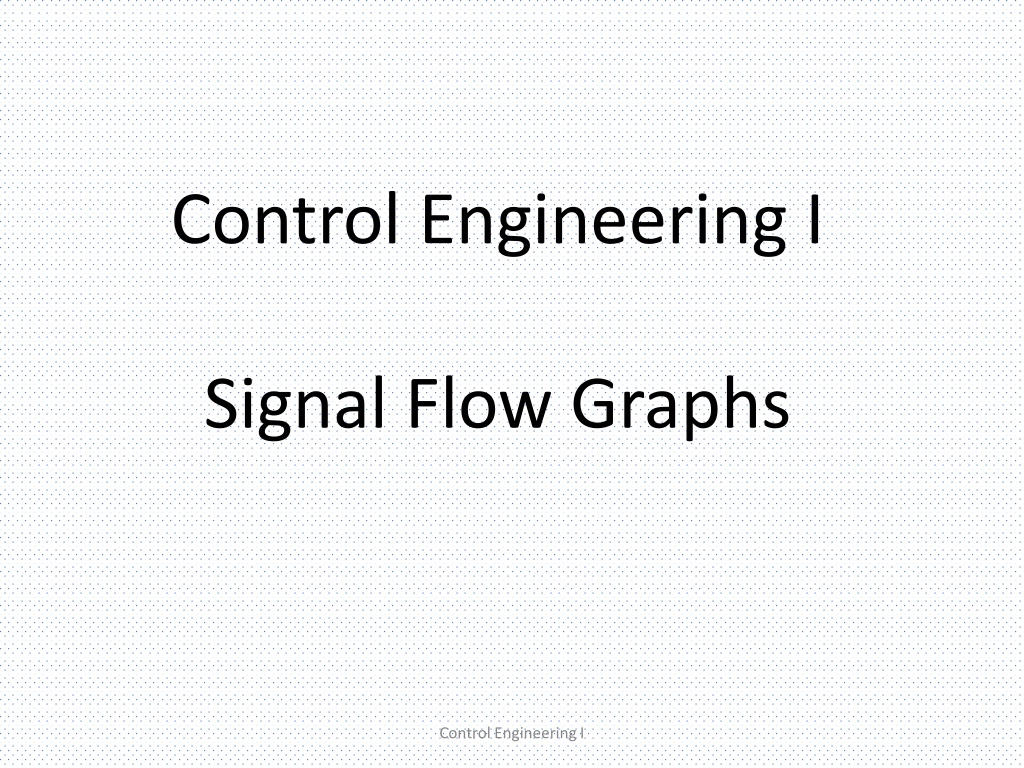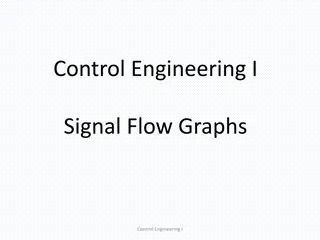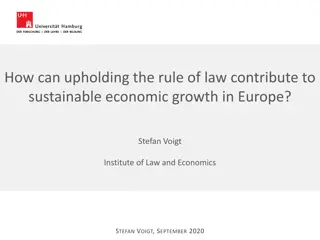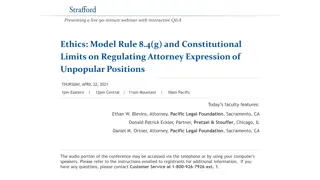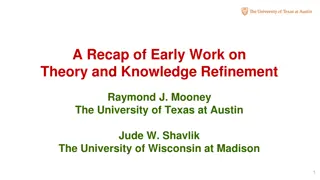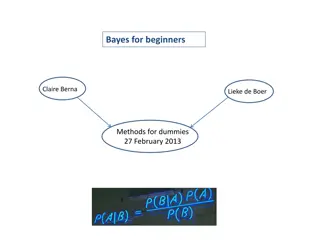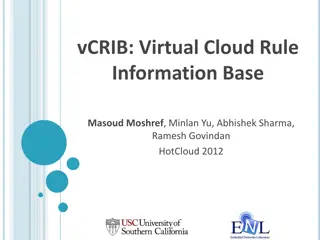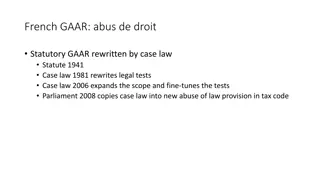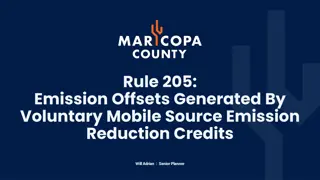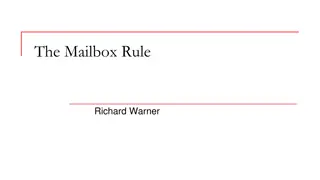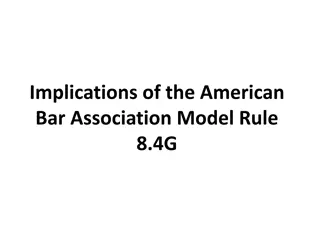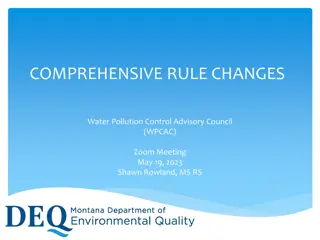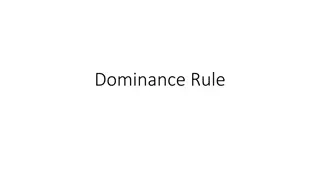Application of Mason’s Rule in Control Engineering System Analysis
Mason's Rule is applied in Example 4 to calculate the transfer function of a system using signal flow graphs. The example demonstrates the determination of forward paths, loop gains, and non-touching loops. Additionally, Example 5 showcases the conversion from block diagrams to signal flow graphs, illustrating the modeling process in control engineering. In Example 6, a system with various components is presented to further understand the application of control engineering principles.
Download Presentation

Please find below an Image/Link to download the presentation.
The content on the website is provided AS IS for your information and personal use only. It may not be sold, licensed, or shared on other websites without obtaining consent from the author. Download presentation by click this link. If you encounter any issues during the download, it is possible that the publisher has removed the file from their server.
E N D
Presentation Transcript
Control Engineering I Signal Flow Graphs Control Engineering I
Example 4: Apply Masons Rule to calculate the transfer function of the system represented by following Signal Flow Graph There are three forward paths, therefore n=3. 3 = i P + + i i ( ) P P P C s 1 1 1 2 2 3 3 = = ( ) R s Control Engineering I
Example 4: Forward Paths P = A A A A 3 42 54 65 76 P = A A A A A P = A 1 32 43 54 65 76 2 72 Control Engineering I
Example 4: Loop Gains of the Feedback Loops L = L = A A A A L = A A 1 32 23 5 76 67 L = A A A A A 9 72 57 45 34 23 2 43 34 L = A 6 77 L = A A = L A A A A A A 3 54 45 10 72 67 56 45 34 23 L = A A A 7 42 34 23 L = A A 4 65 56 L = A A A 8 65 76 67 Control Engineering I
Example 4: two non-touching loops L 2L L 3L 1L L L 5L L 7L L 4L 4 5 3 7 8 6 L 3L L 2L L L 4L 1L L L 6 5 7 4 2L 1L 6 5 L 2L 1L L 8 6 1L L 8 Control Engineering I
Example 4: Three non-touching loops L 2L L 3L 1L L L 5L L 7L L 4L 4 5 3 7 8 6 L 3L L 2L L L 4L 1L L L 6 5 7 4 2L 1L 6 5 L 2L 1L L 8 6 1L L 8 Control Engineering I
From Block Diagram to Signal-Flow Graph Models Example 5 H1 C(s) R(s) X1 E(s) X3 G1 G3 G4 G2 X2 H2 H3 H1 R(s) 1 G2 X2 X3 C(s) X1 E(s) G1 G4 G3 H2 H3 Control Engineering I
From Block Diagram to Signal-Flow Graph Models Example 5 H1 X2 R(s) X1 X3 1 C(s) E(s) G1 G2 G4 1 G3 H2 H3 P = = + + G + + + + G G G G H G G H G G H 1 ( G ) 1 G 2 G 3 4 3 2 3 2 3 4 1 = = = = ; 1 1 1 2 3 4 1 G G + + G G C s ( ) 1 2 3 4 = = = = G + + + + R s G G G G H G G H G G H ( ) 1 1 2 3 4 3 2 3 2 3 4 1 Control Engineering I
Example 6 X1 Y1 G1 + + C(s) R(s) E(s) + X2 G2 Y2 -1 X1 Y1 G1 -1 1 -1 C(s) E(s) R(s) 1 1 1 1 Y2 X2 G2 -1 -1 Control Engineering I
Example 6 -1 X1 Y1 G1 -1 1 -1 C(s) E(s) R(s) 1 1 1 1 Y2 X2 G2 -1 -1 7 loops: 3 2 non-touching loops : Control Engineering I
Example 6 -1 X1 Y1 G1 -1 1 -1 C(s) E(s) R(s) 1 1 1 1 Y2 X2 G2 -1 -1 = = + + + + 1 2G 4G G Then: 2 1 2 = = 1 G G = = = = = = = = + + 4 forward paths: p p 1 ( ( 1) 1) 1 Control Engineering I G G 1 1 1 1 1 1 G 1 1 2 1 G = = = = p ( 1) 1 2 2 2 + + 1 1 G 2 3 1 3 G = = p 2 1 4 4
Example 6 We have ( ) p C s k k = ( ) R s + G G G G 2 2 + 1 1 2 = + G G G 1 2 4 2 1 2 Control Engineering I
Example 7: Determine the transfer function C/R for the block diagram below by signal flow graph techniques. The signal flow graph of the above block diagram is shown below. There are two forward paths. The path gains are The three feedback loop gains are No loops are non-touching, hence Hence the control ratio T = C/R is Because the loops touch the nodes of P1, hence Since no loops touch the nodes of P2, therefore Control Engineering I
Example 6: Find the control ratio C/R for the system given below. The signal flow graph is shown in the figure. The two forward path gains are The five feedback loop gains are There are no non-touching loops, hence All feedback loops touches the two forward paths, hence Hence the control ratio T = Control Engineering I
Design Example 1 1 = + ( ) ( ) ( ) V s I s I s R 1 1 1 Cs I = = ( ) ( ) ( ) CsV s CsV s I s 1 2 1 ( ) ( ) V s s R 2 1 Cs Cs R (s ) (s ) V2 V1 (s ) I1 Control Engineering I
Design Example 2 2 2 = + = + + ( ) ( ) F M s X k X X M s X k X X k X 0 1 1 1 1 2 2 2 1 2 1 2 2 Control Engineering I
Design Example 2 Control Engineering I
Design Example 2 Control Engineering I
